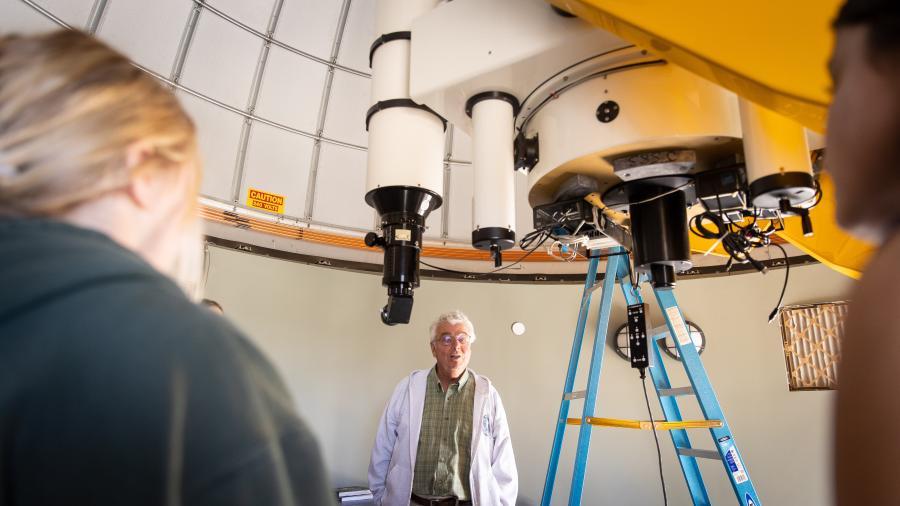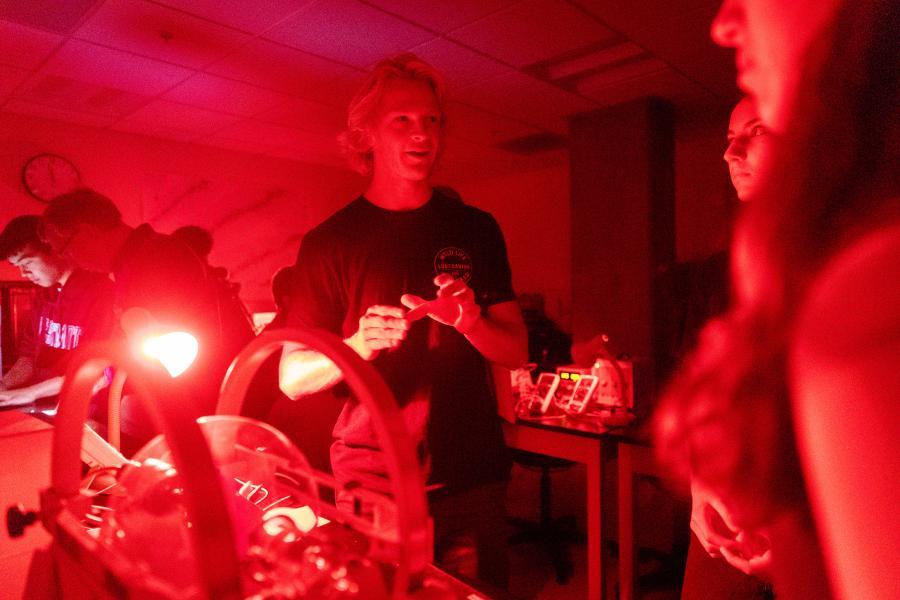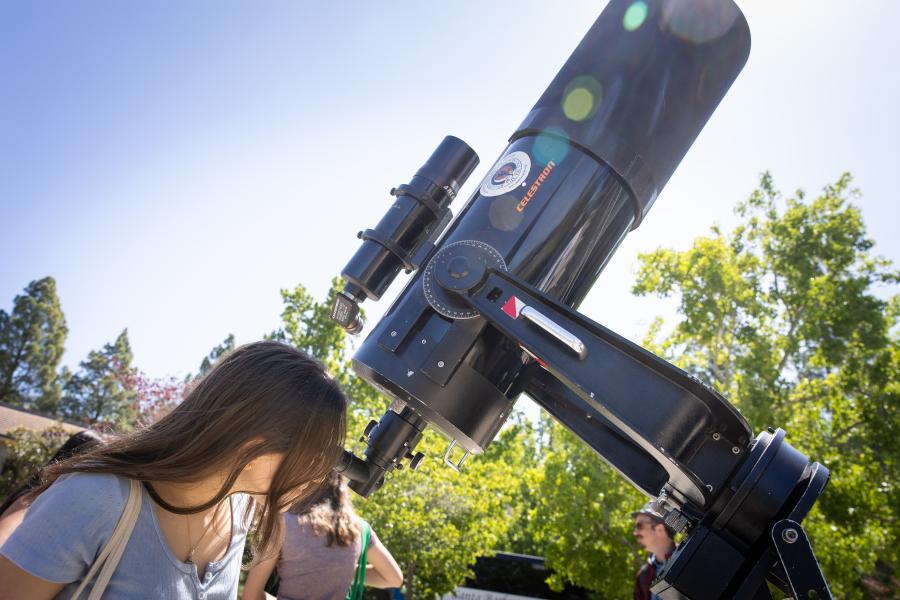Westmont News
Weird Science: Teens Explore Physics

By
Scott Craig
Nearly 40 local high school students enrolled in an AP physics course visited Westmont May 16 for a hands-on exploration into how the universe behaves. The event, “Understanding Physics from Galaxies to Particles,” was led by Ben Carlson, Westmont assistant professor of physics.

“We are asking the fundamental questions: What is the universe made of? What are the building blocks — the fundamental particles,” he said. To begin, the students participated in a virtual tour of ATLAS, the world’s largest particle detector in Switzerland. The Large Hadron Collider, a particle accelerator at CERN (the European Organization for Nuclear Research), is able to accelerate protons to nearly the speed of light. From there, researchers are able to study fundamental particles, quarks and gluons, to better understand how nature works.

“Dark matter comes from an observation in astrophysics, but we can’t explain it based on particles we produce in the lab," Carlson says." There are a lot things scientists don’t understand and you can be a part of solving these questions.”
The students rotated through four stations in Winter Hall and at the Westmont Observatory, learning about the decay process at a radioactivity demonstration, using a cloud chamber to detect particles, observing solar flares on the sun and discovering a particle in data from CERN.